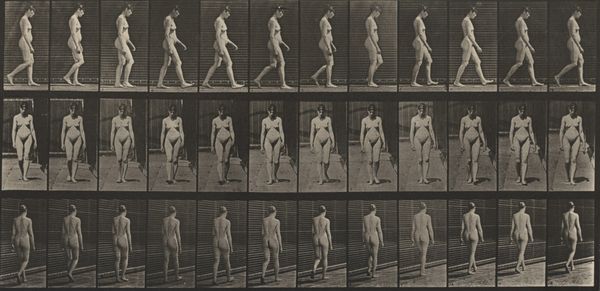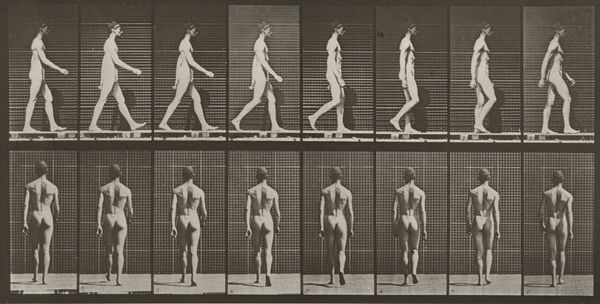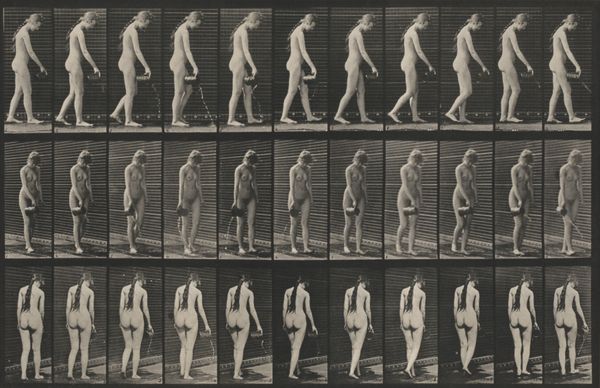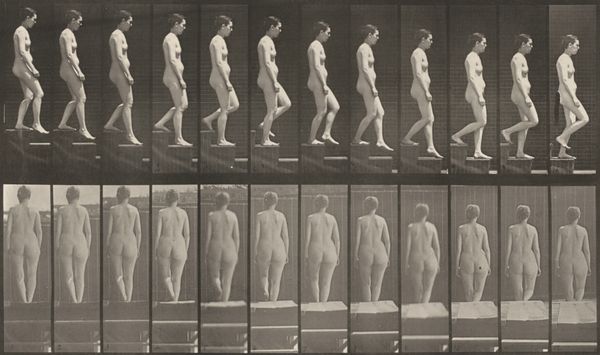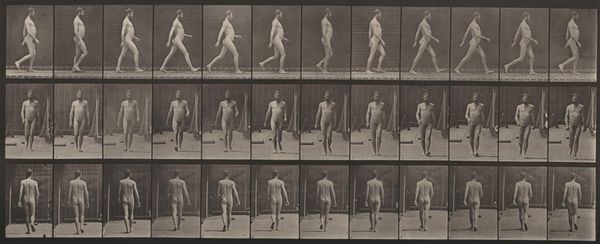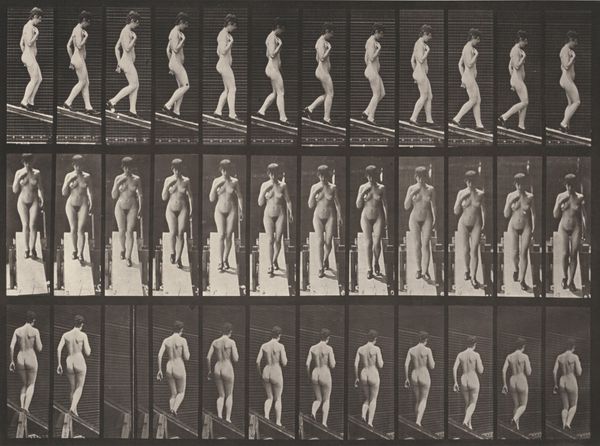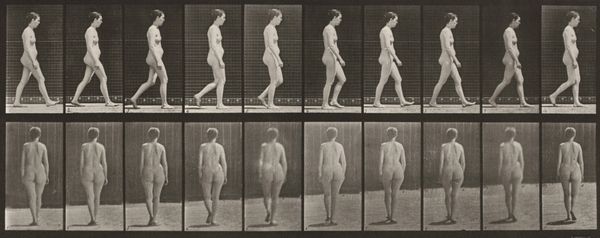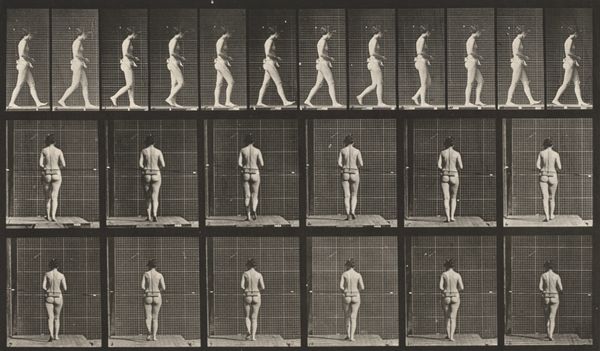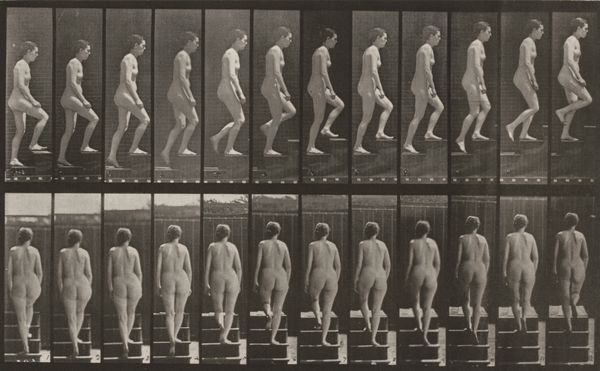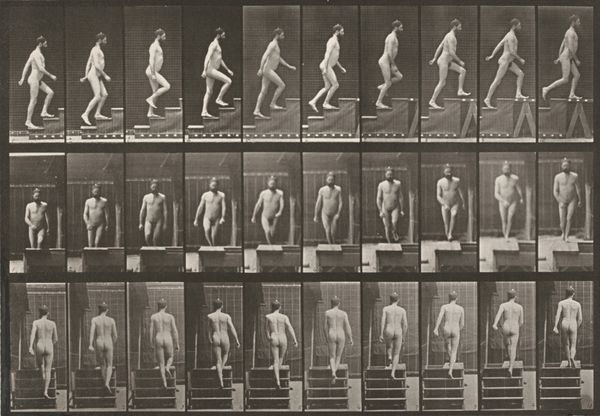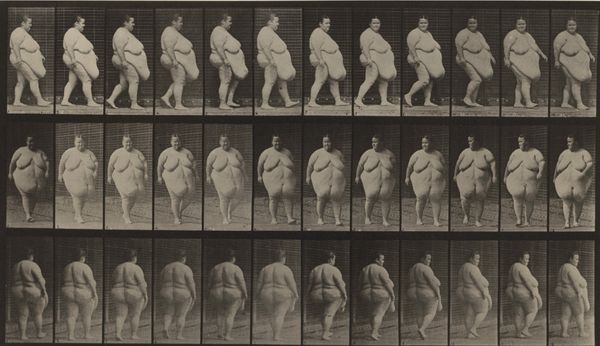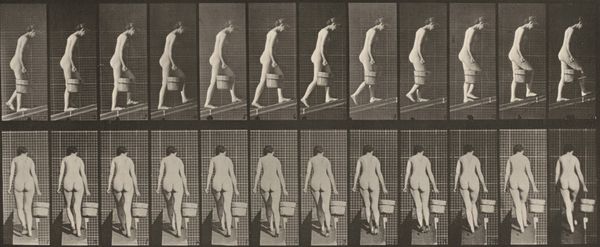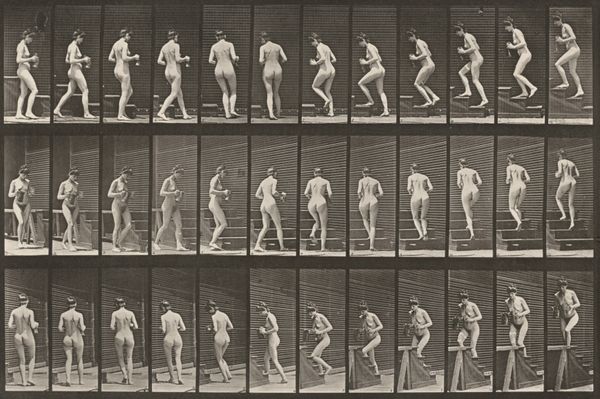
print, photography
#
portrait
#
tall virtical shape
# print
#
photography
Dimensions: image: 19 × 37.25 cm (7 1/2 × 14 11/16 in.) sheet: 47.6 × 60.2 cm (18 3/4 × 23 11/16 in.)
Copyright: National Gallery of Art: CC0 1.0
Curator: Eadweard Muybridge's "Plate Number 89. Ascending stairs", created in 1887, is a print that presents a groundbreaking study of human locomotion. Editor: My initial impression is one of stark simplicity and relentless repetition. It's almost like a flipbook stripped down to its barest essentials, leaving an undeniable yet somehow clinical depiction of movement. Curator: Indeed. Muybridge's work revolutionized how we understand movement, particularly within the context of the late 19th century’s burgeoning interest in science and technology. The structure and sequencing serve not artistic sensibility, but rather a methodical mode of study for other scientists and artists alike. Editor: The image seems so rooted in scientific pursuit, yet it's hard to overlook the almost archaic symbolism of ascending. Stairs, throughout art history, frequently represents aspiration, transition, the climb towards knowledge. Curator: I agree, although it should be noted that Muybridge did a similar set of images for descending. His original aim was simply motion capture of men, women, and animals in motion; the readings into those images is secondary. In this instance, the politics of this type of imagery come into play. Leland Stanford partially commissioned these series to understand horse movement to prove he had been right. His wealth and power created this imagery and affected its role. Editor: But couldn’t the serial presentation of the human form trigger something beyond mere documentation? Think of how many religions incorporate ascent as part of initiation rituals or spiritual awakenings. I feel the ascending motif carries echoes of this cultural memory, irrespective of Muybridge’s intent. Curator: While symbolism cannot be ruled out completely, the photographic print emphasizes objectivity and categorization. The politics of its funding shaped its availability and further shaped the interpretation of this study. I will admit though that these attempts at scientific study, from my viewpoint now, contain the symbolism whether it was initially sought after or not. Editor: So even in its analytical starkness, we can trace evolving symbolic value in the piece as societal readings progress with time? It began, perhaps, clinically. It evolved through exposure. Curator: Exactly. This interplay between the mechanics of its making and the cultural interpretations projected upon it are what make Muybridge so perennially compelling. Editor: A testament to how an image can, through both its creator's design and our accumulated knowledge, transcend its initial purpose.
Comments
No comments
Be the first to comment and join the conversation on the ultimate creative platform.
